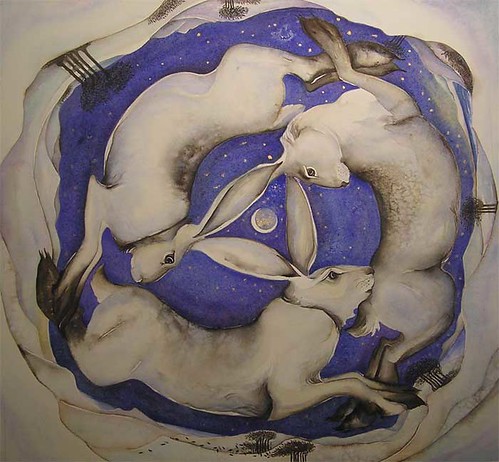Does anyone know anything of the enigmatic running in an eternal circle, appearing to have two ears each, but on closer inspection, actually only having three ears?
From what Ive found out, the earliest known appearance of this motif is in the Mogao caves near Dunhuang, China dating from the Sui to Tang dynasties (581-907 AD). This motif can be found in several places along the Silk Road, and appears to have adopted by the different religions along the way.
It has been found in 13th century Mongol metal work, and on a copper coin, dated 1281 found in Iran.
Nepalese examples have been dated to around AD1200 and the one in Afghanistan to AD1100.
The motif has been found in France, Germany and Switzerland, Southern Russia, with the earliest European examples dating to around AD1200.
The Three Hares also feature in ‘roof bosses’ (carved wooden fixtures) in medieval churches in Britain, most notably in churches in Devon. Other examples of church bosses can be found in Corfe Mullen, Cotehele, Selby Abbey, St. David’s cathedral and Llawhaden. In Long Melford church the design can be seen in a medieval stained glass window in Chester cathedral it appears in a floor tile and in Scarborough the design is in a plaster ceiling.
However, despite much research and many theories, no-one really knows the answer to these questions:
What is the meaning of the three hares motif?
Where did the motif originate?
How did it spread?
Image by t. van gieson. All rights reserved.




